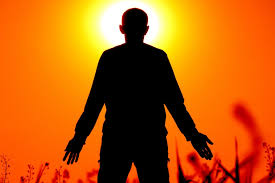
How Do You Know?
How do you “know” something? I mean that as a genuine question.
Consider for a moment how you know your dog’s name, or how to drive a car, or what to say to your child’s teacher the first time you meet him or her. And what about spiritual truth: How do you “know” the deeper movements of the heart, or the more universal qualities of this human life?
Without attempting an epistemological catalogue, I have observed that we have many modes of knowing. We have facts memorized and stored in our brains, as well as emotional understanding, cultural norms, and logical deductions. When I worked at a lab running complex machines, I would sometimes remember how to use a certain machine by noticing that my hand was moving toward a certain knob – body memory. Anything we can’t quite pin down we call “intuition.” How we know matters because some types of knowing are more reliable than others.
In different suttas, the Buddha articulated various ways of knowing, sometimes in a larger or smaller set. He would first list some common but ultimately unreliable options, then point toward “direct knowing” (abhijānāti) as the reliable alternative.
For example, in MN 95, there are five ways of knowing that are unreliable – that is, they can “turn out two different ways”: (Blind) faith, approval or “liking,” oral tradition, reasoning through analogy, and reflective acceptance of a view. Note that two of these are emotional, two cognitive, and one cultural. He then describes a path that makes use of two of these unreliable methods (faith and reflection) to arrive at direct knowing, which is reliable. Other suttas about ways of knowing include MN 100 and AN 3.65.
I find it a bit humbling to consider that all the usual ways I rely on to “know” are not so reliable. And yet, if used in a proper way, they can lead to wisdom.
What does “direct knowing” or “direct experience” mean? Most simply, this type of knowing is unmediated – not filtered through stories, projections, or interpretations. It often occurs in the body as visceral sensations that are difficult to put words onto. But it can also occur exclusively in the mind. It is not esoteric: It feels like sensations, but not the everyday ones we are most familiar with.
Through practice, we begin to sense this option when we are able to relax enough to see things more accurately (with fewer lenses inserted, or with a dirty lens cleaned). At first it feels like “extra” knowledge, but I find it more useful to think that it is normally blocked by our obsessions and habits of mind. Even just beginning to touch into it gives the sense that much more is possible, and that an awakened mind would have a far richer experience as well as access to higher-quality “information.” This then supports wiser action.
Sometimes a model is created with a horizontal and vertical axis. Along the horizontal runs our usual notion of time. The vertical represents the depth to which we experience each moment. Practice directly affects the vertical, which then can change how our lives flow in time. The Dhamma is akaliko, timeless (sometimes translated as “immediate” – which relates to “unmediated” above). Can you sense this?
One time I went on a ropes course. There were various ropes, suspended planks, nets, and other means to cross the gaps between platforms, up to 50 feet above the ground. We wore harnesses so we couldn’t actually fall as we negotiated these swinging, swaying, and generally unstable objects. I can say that the intellectual knowledge that I couldn’t fall was completely useless – my body’s visceral reaction did not care. I picked my way across a number of gaps using mindfulness to feel some of the fear and move through it. Slowly I gained a measure of confidence. But what reduced the fear most effectively was to actually slip off – and be caught by the harness. This direct experience imprinted into the body and mind that falling would not happen.
In practical terms, it is helpful to begin noticing how you know. When you make a declaration, from what basis are you speaking? If you have thought something through logically, you can say, “I’ve reasoned my way through this, and I think…” or “Because of X, Y, Z, it follows that…” If you have faith in something, you can say, “My faith is that….” This provides some honesty and clarity around the statements we put out into the world.
And then we can consider, if I couldn’t use any typical cognitive, emotional, or cultural ways of knowing, how could things still be known?
How do you “know” something? I mean that as a genuine question.
Consider for a moment how you know your dog’s name, or how to drive a car, or what to say to your child’s teacher the first time you meet him or her. And what about spiritual truth: How do you “know” the deeper movements of the heart, or the more universal qualities of this human life?
Without attempting an epistemological catalogue, I have observed that we have many modes of knowing. We have facts memorized and stored in our brains, as well as emotional understanding, cultural norms, and logical deductions. When I worked at a lab running complex machines, I would sometimes remember how to use a certain machine by noticing that my hand was moving toward a certain knob – body memory. Anything we can’t quite pin down we call “intuition.” How we know matters because some types of knowing are more reliable than others.
In different suttas, the Buddha articulated various ways of knowing, sometimes in a larger or smaller set. He would first list some common but ultimately unreliable options, then point toward “direct knowing” (abhijānāti) as the reliable alternative.
For example, in MN 95, there are five ways of knowing that are unreliable – that is, they can “turn out two different ways”: (Blind) faith, approval or “liking,” oral tradition, reasoning through analogy, and reflective acceptance of a view. Note that two of these are emotional, two cognitive, and one cultural. He then describes a path that makes use of two of these unreliable methods (faith and reflection) to arrive at direct knowing, which is reliable. Other suttas about ways of knowing include MN 100 and AN 3.65.
I find it a bit humbling to consider that all the usual ways I rely on to “know” are not so reliable. And yet, if used in a proper way, they can lead to wisdom.
What does “direct knowing” or “direct experience” mean? Most simply, this type of knowing is unmediated – not filtered through stories, projections, or interpretations. It often occurs in the body as visceral sensations that are difficult to put words onto. But it can also occur exclusively in the mind. It is not esoteric: It feels like sensations, but not the everyday ones we are most familiar with.
Through practice, we begin to sense this option when we are able to relax enough to see things more accurately (with fewer lenses inserted, or with a dirty lens cleaned). At first it feels like “extra” knowledge, but I find it more useful to think that it is normally blocked by our obsessions and habits of mind. Even just beginning to touch into it gives the sense that much more is possible, and that an awakened mind would have a far richer experience as well as access to higher-quality “information.” This then supports wiser action.
Sometimes a model is created with a horizontal and vertical axis. Along the horizontal runs our usual notion of time. The vertical represents the depth to which we experience each moment. Practice directly affects the vertical, which then can change how our lives flow in time. The Dhamma is akaliko, timeless (sometimes translated as “immediate” – which relates to “unmediated” above). Can you sense this?
One time I went on a ropes course. There were various ropes, suspended planks, nets, and other means to cross the gaps between platforms, up to 50 feet above the ground. We wore harnesses so we couldn’t actually fall as we negotiated these swinging, swaying, and generally unstable objects. I can say that the intellectual knowledge that I couldn’t fall was completely useless – my body’s visceral reaction did not care. I picked my way across a number of gaps using mindfulness to feel some of the fear and move through it. Slowly I gained a measure of confidence. But what reduced the fear most effectively was to actually slip off – and be caught by the harness. This direct experience imprinted into the body and mind that falling would not happen.
In practical terms, it is helpful to begin noticing how you know. When you make a declaration, from what basis are you speaking? If you have thought something through logically, you can say, “I’ve reasoned my way through this, and I think…” or “Because of X, Y, Z, it follows that…” If you have faith in something, you can say, “My faith is that….” This provides some honesty and clarity around the statements we put out into the world.
And then we can consider, if I couldn’t use any typical cognitive, emotional, or cultural ways of knowing, how could things still be known?
